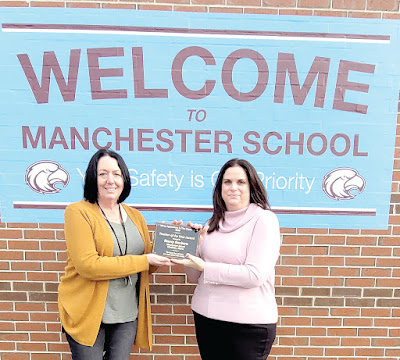More
than 90 seventh-grade Windham Middle School students participated in a kickoff
event to prepare for their Project-Based Learning (PBL) module entitled “Taking
Back Maine’s Future III” on March 1 in the Windham High School Auditorium.
The National Anti-Drug Coalition local chapter, Be The Influence, sponsored the Project-Based Learning event and local radio celebrity of the 93.1 FM morning show, Blake Hayes, was the guest host.
Project-Based
Learning is a teaching method in which students gain knowledge and skills by
working for an extended period of time to investigate and respond to an
authentic, engaging and complex question, problem or challenge.
This
is Windham Middle School’s third year providing this particular initiative with
the intent being to empower students to combat Maine’s opioid crisis from every
possible angle. Using current data analysis and research, the students will
examine the impacts of Maine's opioid crisis and make predictions on what the
state might look like in the future.
The
big culminating event that will both demonstrate a bright future that has
overcome the opioid crisis as well as a dark future if it is not, will be held
on the campus of Windham Middle School on Thursday, May 5.
Hayes
began the kickoff by telling the students a personal story.
“My
dad was a construction worker and an actor,” he said. “He even got a role on
Saturday Night Live as an extra. My dad was an awesome guy who happened to be
an addict and he died of an overdose. Maybe someone here might find the key to
move forward in a positive way – and save someone like my dad.”
The event also comprised of an impressive expert panel including the following:
**
Jacinta – The subject of renowned 2020 documentary and person in recovery
**
Gordon Smith – Director or Opiate Response under Janet Mills
**
Jonathan Sahrbeck – Cumberland County District Attorney
**
Officer Matt Cyr – Windham Middle School Resource Officer
**
Deputy Chief John Kooistra – Windham Fire Department
**
Brittany Reichmann – A former Windham High School student and a person in
recovery
During
the event, Jacinta and Reichmann both shared their personal stories and all the
panelists were available to answer student questions and share their personal
experiences with the opioid crisis, inspiring students to take on the spring
project with an unyielding determination.
This
innovative PBL approach with which “Taking Back Maine’s Future” brings the
opioid epidemic into focus for young teens gained national recognition with an
invite to the National Community Anti-Drug Coalitions of America, (CADCA)
conference in Washington DC in 2019.
“This
project is engaging in that it gives students a chance to tackle a real problem
through data analysis and research,” WMS teacher AJ Ruth said. “Presenting our
project at the national conference was exciting and has provided our team with
more resources for this year’s event.”
Ruth
said that the 2018’s Taking Back Maine’s Future springtime concluding event was
a great success, with over 600 community members in attendance. This year promises
to be even more impactful.
The kickoff event ended with a short clip of “Back To The Future” from which the PBL is slightly based. The short film ended with a quote by the character, Dr. Emmet Brown, “Your future hasn’t been written yet. No one’s has. Your future is whatever you make it. So, make it a good one.” <













